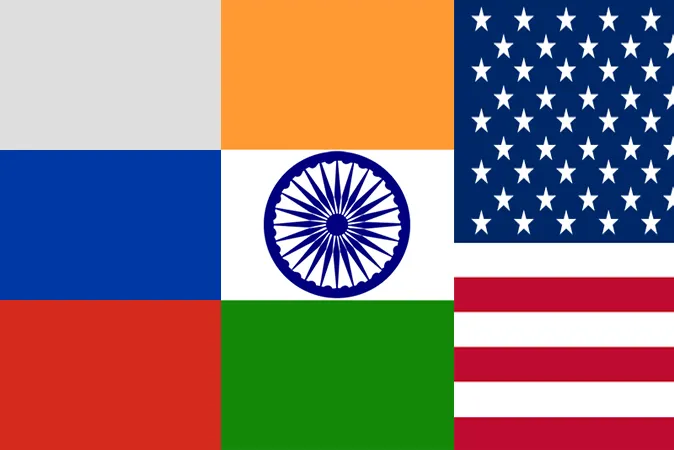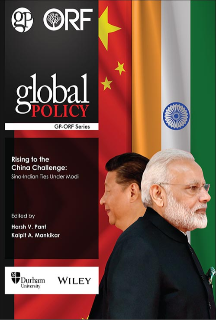
India abstained from the procedural vote at the United Nations Security Council (UNSC) ahead of a meeting to discuss the current tension around Ukraine triggered by a Russian troop build-up on the borders of its western neighbour. Russia and China voted against holding the meeting, while India, Gabon, Kenya abstained, for which they were hailed by Russia for not succumbing to “
US hand-twisting before the vote”.
The vote renewed conjecture about India's ability to balance its historically reliable and strategic partnership with Russia while nurturing its growing relationship with the United States (US). The Indian vote while belying recent suggestions of a chasm in the Indo-Russian relationship has been interpreted largely as a pro-Russia move.
India, however, attempted to balance the vote with an uncharacteristic statement breaking its silence on the tensions in Europe by calling for a peaceful resolution, keeping in mind the interests of all parties involved. The US’ official response following India’s abstention, stating that America’s relationship with India has not been impacted by the ongoing tensions with Russia, seems to suggest that India is so far successfully navigating between both the great powers.
The Indian vote while belying recent suggestions of a chasm in the Indo-Russian relationship has been interpreted largely as a pro-Russia move.
Meanwhile, a number of diplomatic interactions between the US and Russia over the past few weeks about the tensions around Ukraine have ended up in an apparent stalemate with the Washington rejecting Russia’s security demands. The US-led West has also been pushing the narrative that Russia is planning to fabricate a pretext to invade Ukraine, for example, through a graphic propaganda video that would depict an attack by Ukraine on Russia. The US has threatened unprecedented economic sanctions against Russia, much more stringent than the
hundreds of previously imposed sanctions if Moscow invades Ukraine.
Russia has vehemently denied all speculation about an imminent invasion. However, at the same time, Russia stresses that they are running out of patience and if the West fails to quickly address their concerns, this might entail “military-technical” consequences, without specifying their nature.
The apprehensions of a looming invasion of Ukraine, largescale military build-ups, threats to inflict harsh repercussions on each other and the repeated failure of negotiations to find a breakthrough, have meant that the situation remains tense. Not even the most seasoned experts can predict how things might shape up.
The US-led West has also been pushing the narrative that Russia is planning to fabricate a pretext to invade Ukraine, for example, through a graphic propaganda video that would depict an attack by Ukraine on Russia.
India has good relations with both Russia and the US and siding with one of these countries could cost India its relationship with the other. However, that has not been the case so far as India seems to have taken a neutral approach. India has repeatedly stressed that it views its relationship with Russia and the US independent of each other and will not let either of them dictate its foreign policy.
Russia has arguably been India’s most trustworthy partner for more than five decades, but in recent years, spurred by its deteriorating ties with the US, Moscow has enhanced its partnership with China. This has raised doubts amongst policymakers in Delhi about Russia's effectiveness in balancing China.
India, which had been improving ties with America since the start of the century, is now fast-tracking manifold its multi-faceted cooperation with the US, mainly to balance a belligerent China.
These changing geopolitical equations have also generated speculation of an Indo-Russian drift and questions about India's ability to balance its relations with rival great powers.
Despite the growing tensions between the West and Russia, India hosted the Russian President, Vladimir Putin, for the Indo-Russian annual bilateral summit in December 2021. India and Russia also held their first ever 2+2 Ministerial dialogue in December, indicating that Russia is as important to India as its QUAD partners with whom it already had this mechanism.
Notwithstanding the possibility of American sanctions
through CAATSA, India not only decided to go ahead with the deal for S-400 missile defence systems that it signed in 2018, but also finalised a fresh deal worth INR 5,000 crores for the manufacture of 7.5 lakh AK 203 Russian assault rifles.
India and Russia also held their first ever 2+2 Ministerial dialogue in December, indicating that Russia is as important to India as its QUAD partners with whom it already had this mechanism.
Similarly, India has been working closely with the US in the Indo-Pacific, something that Russia has vociferously criticised as a US-led strategy to sabotage India’s longstanding relationship with Russia. In spite of Russia’s staunch disapproval, India has continued pursuing its Indo-Pacific Strategy through regular engagements within and outside the QUAD, showcasing that it would primarily act in favour of its own interests.
Even though Indo-Russian trade numbers are paltry in comparison to Indo-US numbers, India’s defense and energy partnership with Russia are of utmost importance. Secondly, Russia has been India’s most time-tested strategic partner, with the two having cooperated on political, security, and other strategic matters for a very long time and are continuing to do so.
India and the US both see China as the biggest threat and are committed towards cooperating in the Indo-Pacific to manage China’s rise as two of the important members of the QUAD which also includes Japan and Australia.
The US is one of India’s
largest trading partners; India has a robust defense partnership with the US
through institutional arrangements such as the Logistics Exchange Memorandum of Understanding (LEMOA), Communications Compatibility and Security Agreement (COMCASA), Industrial Security Annex (ISA), Basic Exchange and Cooperation Agreement (BECA), Defence Technology Trade Initiative (DTTI) and has also accorded the status of a Major Defence partner to the US. Lastly, India and the US both see China as the biggest threat and are committed towards cooperating in the Indo-Pacific to manage China’s rise as two of the important members of the QUAD which also includes Japan and Australia.
On the political front, both, the US and Russia as veto-wielding powers in the United Nations support India’s bid for a permanent seat in the UN Security Council as well as support India’s entry into the Nuclear Suppliers Group. Since a permanent seat in the UNSC and NSG membership are seen as pivotal to India’s aspirations of projecting itself as a major global power, the strategic relationship with the US and Russia becomes even more paramount. Needless to say, disagreements are a part of every bilateral equation, but it is important to navigate these tactfully.
With each passing day, the situation over Ukraine is getting more serious, and it is unclear how India will react if hostilities break out. But so far, India has successfully maintained ties with its major strategic partners, and is making its own foreign policy decisions irrespective of whether Russia or the US approve or not.
The views expressed above belong to the author(s). ORF research and analyses now available on Telegram! Click here to access our curated content — blogs, longforms and interviews.



 India abstained from the procedural vote at the United Nations Security Council (UNSC) ahead of a meeting to discuss the current tension around Ukraine triggered by a Russian troop build-up on the borders of its western neighbour. Russia and China voted against holding the meeting, while India, Gabon, Kenya abstained, for which they were hailed by Russia for not succumbing to “
India abstained from the procedural vote at the United Nations Security Council (UNSC) ahead of a meeting to discuss the current tension around Ukraine triggered by a Russian troop build-up on the borders of its western neighbour. Russia and China voted against holding the meeting, while India, Gabon, Kenya abstained, for which they were hailed by Russia for not succumbing to “ PREV
PREV


